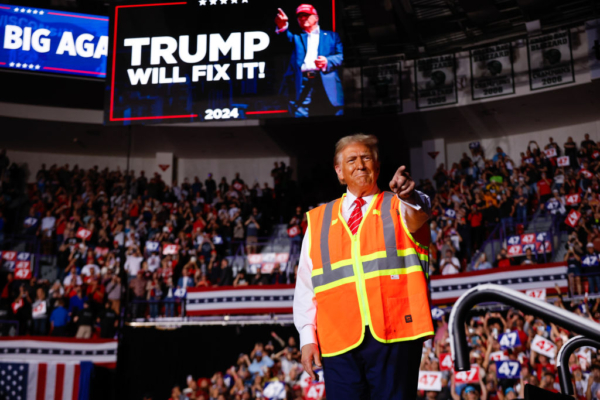During the Trump administration, trade representative Robert Lighthizer analyzed the challenges and struggles of the American economy over the past 30 years. He stated that the trade policies implemented during the Trump era were a response to countries that were disrupting free trade, with tariffs being the most effective measure.
In an article published by the Financial Times on Friday, Lighthizer highlighted the significant trade deficit, decline in manufacturing, and slowing economic growth that the United States has faced over the years. He attributed these challenges to countries engaging in “predatory” practices under the guise of global free trade, without explicitly naming China in the article.
Towards the end of his first term, Trump proposed the idea of decoupling the U.S. and Chinese economies. Lighthizer expressed support for this approach.
Lighthizer pointed out in his analysis that over the past 30 years, the U.S. had accumulated significant trade deficits annually, resulting in vast amounts of wealth being transferred overseas in exchange for current consumption demands.
He wrote, “Over the past thirty years, we have lost millions of job opportunities, many of which were well-paying manufacturing positions. We have seen median wages stagnate, except for a period of growth during the Trump administration.”
The article emphasized the decline of the U.S. in various sectors of manufacturing, from electronics to textiles and chemicals, with the U.S. essentially losing its dominance in these core industries.
In response to these challenges, the Trump administration implemented a series of economic remedies, with the trade war against China being the most notable, a policy that carried over into the Biden administration.
The U.S.-China trade war began in 2018 when Trump imposed tariffs as high as 25% on Chinese imports worth $350 billion, covering items such as solar panels, washing machines, steel, and aluminum, accounting for 65% of China’s exports to the U.S. in 2018.
In early 2020, the Trump administration signed the “Phase One Trade Agreement” with China, where the U.S. reduced some tariffs in exchange for increased Chinese purchases of American export products, including $50 billion worth of agricultural goods. However, China fell short of meeting the agreed purchase targets.
During the 2024 election campaign, Trump stated that if re-elected, he would demand China to comply with the above-mentioned agreements. He also mentioned imposing 60% or higher tariffs on Chinese goods and warned of imposing 100% tariffs on Chinese cars produced in Mexico to evade sanctions.
The article highlighted that in the global economy, countries that consistently maintain large trade surpluses are the protectionists, while countries like the U.S., which frequently experience significant trade deficits, are the victims in this scenario.
Lighthizer expressed, “In the recent decades, we have seen industrial policies by various countries aimed not at raising living standards but at increasing exports—accumulating assets overseas and establishing a competitive advantage in frontier industries.” He referred to these practices as the condemned “beggar-thy-neighbor” policies from the early 20th century.
In response to foreign industrial policies that severely damaged the U.S., Trump decided to take action.
Lighthizer summarized three foreign trade policies during the Trump era: firstly, the U.S. could implement an import and export licensing system; secondly, legislation could be enacted to levy capital admission fees on incoming investments, making acquisition of U.S. assets more costly; and finally, the U.S. could counter unfair industrial policies of predatory countries through tariffs.
The former trade representative stated that from the experience during Trump’s first term, the last method proved to be effective. During Trump’s term, there was growth in American manufacturing, a decline in imports before the COVID-19 pandemic, historical highs in actual wage increases for workers, and no occurrence of the feared inflation by critics.

